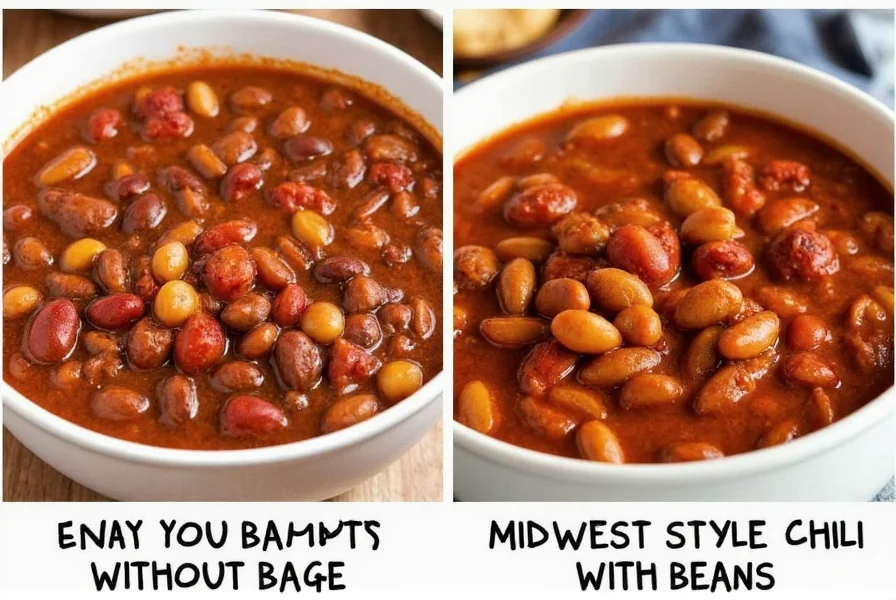When exploring the question does real chili have beans, the answer depends on which culinary tradition you follow. The most authoritative sources on chili history agree that the original chili recipes from Texas and Northern Mexico contained only meat, chiles, and spices—no beans.
The Historical Roots of Authentic Chili
Chili con carne ("chili with meat") originated among working-class Texans and Mexican immigrants in the late 19th century. Cowboys, vaqueros, and railroad workers needed portable, non-perishable food that could be cooked over open fires. The original recipe was simple: dried beef, suet, dried chiles, and spices slow-cooked together.
According to the Texas State Historical Association, early chili was often sold by chili queens—Mexican American women who operated outdoor food stalls in San Antonio from the 1880s to early 1900s. Their recipes contained no beans, focusing instead on the complex flavors of various chile peppers and meat.
Why Beans Became Controversial
Beans entered chili recipes during the Great Depression when cooks stretched limited meat supplies with affordable beans. This practical adaptation became popular across much of the United States but was rejected by Texas chili traditionalists.
| Chili Tradition | Bean Policy | Key Characteristics |
|---|---|---|
| Texas Red | No beans | Meat, chiles, spices only; often thickened with masa |
| Midwest/Campfire | Beans included | Meat, beans, tomatoes, sometimes other vegetables |
| Cincinnati Style | No beans | Served over spaghetti with oyster crackers |
The chili bean controversy reached its peak when the International Chili Society established competition rules in 1967. Their guidelines explicitly prohibit beans in championship chili, cementing the no-beans standard for what many consider "real" chili.
What Culinary Experts Say About Authentic Chili
Food historian Joe E. Cooper, author of With a Knife, a Fork, and a Spoon, documented traditional chili recipes from the 1950s that contained no beans. Similarly, chili champion Frank X. Tolbert wrote extensively about Texas chili history, noting that "beans have no place in a true chili pot."
Modern chefs like Aaron Franklin of Franklin Barbecue in Austin maintains that authentic Texas chili focuses on the interplay between meat and chiles: "When you add beans, you're making a different dish—it's not chili con carne anymore."
Regional Variations and Modern Interpretations
While purists insist real chili doesn't have beans, regional variations tell a more complex story:
- Texas Style: Strictly no beans, often no tomatoes either
- Midwest Style: Typically includes kidney beans and sometimes tomatoes
- Cincinnati Style: No beans, served over spaghetti
- New Mexico Style: Focuses on local chiles, may include beans
The history of chili con carne shows that recipes have always evolved based on available ingredients and cultural influences. What matters most is understanding which tradition a particular recipe follows rather than declaring one version "more real" than others.
Practical Guidance for Chili Lovers
If you're wondering is it real chili if it has beans, consider these practical points:
- For competition chili or traditional Texas-style: no beans
- For family meals or casual cooking: include beans if you prefer
- When ordering at restaurants: ask about their regional style
- When following recipes: understand which tradition they represent
The chili bean controversy ultimately reflects America's diverse culinary landscape. As food writer Robb Walsh notes, "Chili is a conversation, not a recipe set in stone." Whether you prefer your chili with or without beans, understanding the history helps you appreciate this beloved dish more deeply.

Frequently Asked Questions
Why don't traditional chili recipes include beans?
Traditional Texas chili recipes exclude beans because the original dish was created by cowboys and Mexican immigrants who focused on meat and chiles as primary ingredients. Beans were a later addition during the Great Depression when cooks needed to stretch limited meat supplies.
Can chili with beans still be authentic?
Yes, chili with beans can be authentic to certain regional traditions, particularly Midwest and some California styles. Authenticity depends on which culinary tradition you're following—Texas purists reject beans while other regions embrace them as part of their local interpretation.
What do official chili competitions say about beans?
Major chili competitions like those sanctioned by the International Chili Society explicitly prohibit beans in their championship categories. Their rules state that authentic chili con carne must contain only meat, chiles, and spices—no beans, tomatoes, or other vegetables.
How did beans become associated with chili?
Beans became associated with chili during the Great Depression when cooks needed affordable ways to stretch limited meat supplies. This practical adaptation became popular across much of the United States outside Texas, leading to the regional variation we now recognize as Midwest-style chili.
What's the difference between chili con carne and regular chili?
Chili con carne literally means "chili with meat" and traditionally refers to the bean-free Texas style made with meat, chiles, and spices. "Regular" chili is a more general term that often includes beans and sometimes tomatoes, representing the more common Midwest and commercial interpretations of the dish.











 浙公网安备
33010002000092号
浙公网安备
33010002000092号 浙B2-20120091-4
浙B2-20120091-4